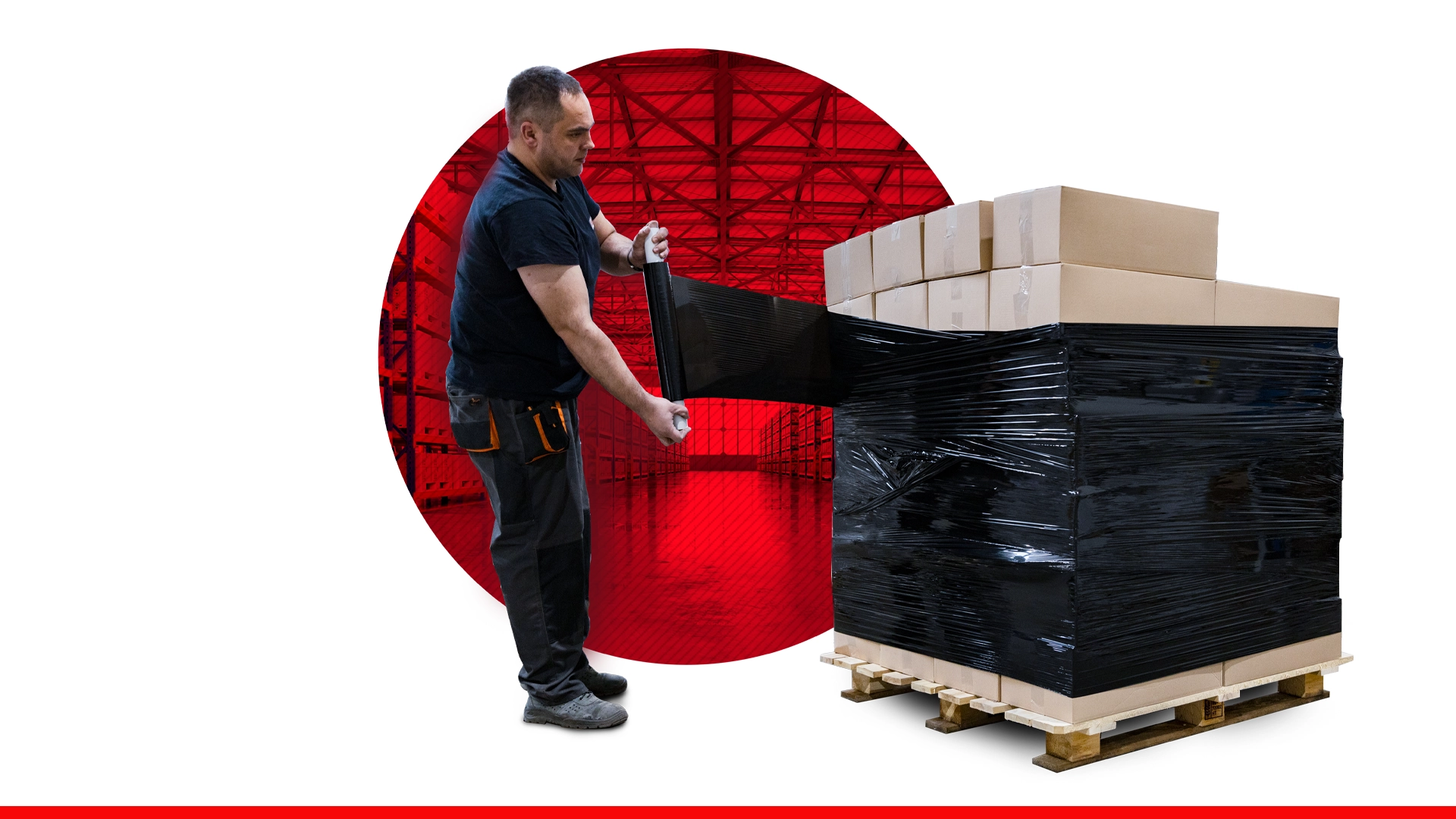Stretch film is a versatile material that plays a key role in storage, logistics and protecting products during transport. Thanks to its flexibility and stretching ability, stretch film is an invaluable tool in many industries, from logistics to the food industry. In this article, we will carry out a comparison of the different types of those products, to help you make the right choice depending on your individual needs.

Hand stretch films with extended core do not require dispensers.
What types of stretch film are there?
Hand Stretch Film is often used in smaller businesses and in situations where manual wrapping of pallets or goods is required. Hand film is easy to handle and allows workers the flexibility to adjust the film tension to suit the specific load. It is also an economical option for smaller palletisations. Hand film is sometimes used with dispensers, although we also offer a version with an extended core for even more convenient wrapping. Mini-Rap film is recommended for securing smaller parcels.
Machine Stretch Film is designed for automatic packaging machines. It is characterised by higher packaging efficiency and accuracy compared to manual film. It is ideal for higher volume loads where speed and efficiency are key factors.
Pre-stretch film is a type of film that is stretched at the production stage. This achieves greater material savings (the film thickness ranges from 6 to 12 microns) and cost reductions. Depending on the type, it can be used manually or through wrappers with a simple tensioning system.
Black Stretch film is mainly used for masking loads. We offer black, white and blue stretch film. This can be useful for marking loads, identifying products or visually distinguishing batches of goods.
Food grade stretch film is dedicated for food-producing industry. It perfectly protects the product against odour penetration. It can be produced with Frozen™ enhancement for use in lower temperatures (e.g. cold stores).
PCR film is classified as environmentally friendly film. Its production is based on PCR regranulates (guaranteed 30%), which is in line with the European Union directive on the manufacture of plastic products using regranulates.
Properties and applications of stretch film
Depending on the type of film, the strength and resistance to damage can vary. Mechanical stretch wrappers have a higher stretching capacity than a human, hence users of machine films often opt for higher quality films in order to exploit the potential of the wrapper. Machine stretch film is usually faster and more efficient compared to manual stretch film wrapping.
Hand stretch film can allow greater control over stretch and tension, which is useful for non-standard shapes of wrapped loads. Pre-stretch film, on the other hand, can be more flexible due to the pre-stretch process during production and offer higher load stabilisation at a lower thickness. This makes pre-stretch film classed as an economical film that reduces wrapping costs.
Different types of stretch film are more suitable for specific industries. For example, machine stretch film may be ideal for distribution centres and manufacturing companies, while hand stretch film can be used in small shops or businesses.
Choice of stretch film
The final choice of the type of stretch film depends on individual needs, the type of loads and logistics specifications. Stretch film has many uses and benefits in storage and transportation, and is an essential element in the efficient handling of goods. By considering the different types of film types and features, you can make the right decisions that will improve efficiency, protect the logistics process and reduce costs.

